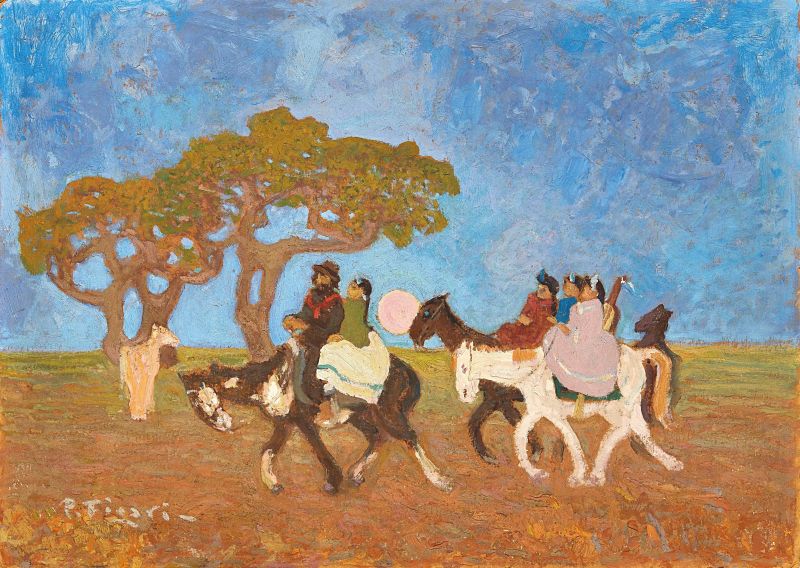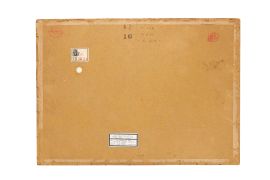Pedro Figari
(Montevideo 1861 - 1938)
A LA FIESTA
1933 circa
firmato in basso a sinistra
olio su cartone
mm 496x695
retro: titolato, etichetta della Bienal Sao Pau, etichetta con “N. 171 / Serie VIII.D.j”
A LA FIESTA
circa 1933
signed lower left
oil on cardboard
19 9/16 by 27 5/16 in
on the reverse: titled, label of the Bienal Sao Pau, label with “N. 171 / Serie VIII.D.j”
Esposizioni
Bienal Sao Pau, Sao Pau, Brasil, 1996, n. 16.
Le vivide scene di Pedro Figari si popolano costantemente di tradizionali tipi popolari: gauchos, creoli, negros, rigorosamente in costumi folkloristici, movimentano le opere del pittore uruguagio attraverso una resa cromatica brillante, succosa, a campiture piatte, chiaramente derivata dalla pittura nabis francese, che il pittore aveva potuto studiare e assimilare nei suoi anni a Parigi, dove fu amico di Bonnard. Tornato in Uruguay nel 1933, negli anni successivi Figari realizza molteplici bozzetti e variazioni su questo stesso soggetto. In questo esemplare, esposto alla Biennale d’arte di San Paolo del 1996, costruisce la scena sui due piani orizzontali della terra e del cielo al tramonto. Ad attraversarla da destra a sinistra, con ritmo lento e cadenzato, due gruppi di figure a cavallo dirette a una festa di paese, verosimilmente una coppia di fidanzati, in testa, seguita e scrutata da altre tre donne intente a spettegolare. Il metodo con cui Figari lavora sull’opera rivela quanto irrilevante fosse il disegno, e più in generale la linea, nel suo lavoro, fondato principalmente sulla predominante materialità del colore, steso con pennellata breve e rapidissima.
Pedro Figari’s vivid scenes are always populated by traditional figures from popular culture. Gauchos, Creoles, negros, all rigorously in folk costume, enliven the works of this Uruguayan painter with brilliant, vivid, flat fields of colour, clearly derived from the French Nabis painters, whose work he studied and assimilated during his years in Paris, where he was a friend of Bonnard. In the years following his return to Uruguay in 1933, Figari produced many sketches and variations of the subject of our painting, which was shown at the 1996 Bienal de São Paulo. In it, he builds his scene on two horizontal levels, the land and the sky, at sunset. Two groups of mounted figures cross the foreground from right to left, with a slow, cadenced rhythm, heading for a town festival. They are quite probably an affianced couple on the lead horse, followed and watched by three gossiping women. Figari’s working method reveals how irrelevant the subject – and more in general, the line – was in his work: it instead relies principally on the predominant materiality of his colour, laid on in short, rapid-fire brushstrokes.




